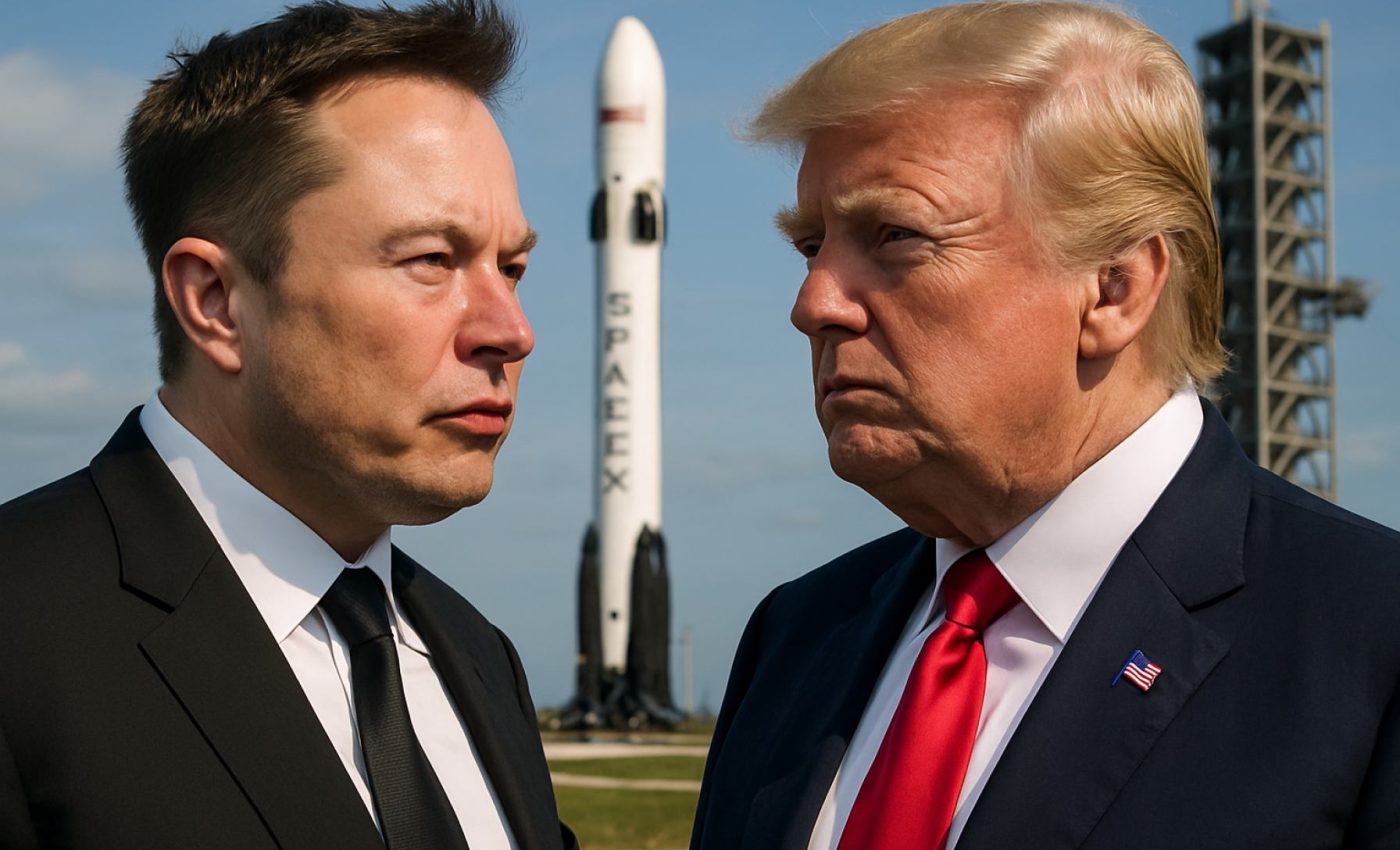Space Wars 2025: Why Musk’s Threat to Ground SpaceX’s Dragon Capsule Could Ground NASA—and Change History
Tensions rise as Elon Musk threatens to retire SpaceX’s Dragon spacecraft after clashes with Donald Trump, putting NASA’s missions at risk.
• SpaceX Dragon 2 is NASA’s primary crew transport to the ISS since 2020
• Over 60% of recent NASA launches rely on SpaceX hardware
• Soyuz backup could cost NASA up to $90 million per astronaut seat
• SpaceX awarded over $2 billion annually in U.S. government contracts
The simmering rivalry between Elon Musk and Donald Trump just shot into orbit—literally. After a week of social media faceoffs, high-stakes political threats, and global scrutiny, a single tweet from Musk promised to “decommission” SpaceX’s legendary Dragon capsule, a futuristic spacecraft that has become the backbone of American space travel.
Behind the fireworks lies a very real threat: NASA’s ongoing human and cargo missions could grind to a halt, casting doubt on American space dominance and forcing a return to Russian reliance for trips to the International Space Station (ISS).
SpaceX’s Dragon isn’t just a high-tech spacecraft; it’s the key to NASA’s autonomy, global prestige, and future moon landings. When Trump publicly threatened to axe SpaceX’s lucrative federal contracts and subsidies, Musk fired back, unleashing panic and urgent strategy talks at NASA and whispers across Capitol Hill.
For more on the billionaire rivalry, see CNN. To explore commercial space history, visit SpaceX and Roscosmos.
Q: What Makes SpaceX’s Dragon Capsule So Crucial in 2025?
Dragon isn’t just another spacecraft. Launched first in 2010 for cargo, followed by a crew version in 2020, it redefined space travel with reusable rocket tech, emergency escape engines, and sophisticated AI navigation. It stands alone as the first private ship to ferry astronauts to the ISS, shattering government monopolies and giving NASA independence from Russian Soyuz rockets.
Without Dragon, America quite literally loses its ticket to space. NASA would need to renegotiate pricey deals with Russia, resorting to the aging Soyuz—a capsule first designed in the Cold War and upgraded over decades, but no longer cutting-edge.
How Could NASA Reboot If Dragon Disappeared?
If Musk carried out his threat and grounded the Dragon fleet, NASA’s options would shrink dramatically. Soyuz would become the only short-term lifeline, but this comes with several drawbacks:
- Soaring costs: Each crew seat could cost the U.S. up to $90 million.
- Diplomatic headaches with Russia, especially with global tension elevated.
- Delayed science missions and hampered new lunar ambitions, including the Artemis moon program.
NASA has yet to field viable replacements, though new entrants like Boeing’s Starliner are still in the slow lane.
Why Is the Musk-Trump Feud Heating Up Now?
This latest escalation follows Trump’s threats to slash government support for Musk’s companies, including both rocket launches and Starlink internet satellites. SpaceX’s government contracts now exceed $2 billion a year, not only for NASA, but also for Department of Defense and communications services.
Insiders suggest Musk’s retort was part self-defense, part negotiation tactic. While he soon walked back his threat, economic and political uncertainty around the next U.S. election could still cloud future missions.
FAQ: What Are Dragon’s Next Moves for 2025 and Beyond?
- Dragon XL: Larger cargo version planned for moon gateway missions.
- Starship overlap: SpaceX aims to shift bigger missions to its new Starship, but Dragon remains vital for crew rotation to ISS.
- Alternative partners? NASA continues to court Boeing and other providers, but reliability and certification are roadblocks.
SpaceX’s Dragon is more than a symbol—it’s the pillar that America’s astronauts and space ambitions stand on. As billionaire egos clash at the highest levels, the fate of science, innovation, and humanity’s next big leap hangs in the balance.
Don’t Miss the Next Leap—Follow These Steps to Stay Informed:
- Monitor NASA and SpaceX’s latest updates on their official sites.
- Watch for key announcements around U.S. space budgets in 2025.
- Check reputable news sources like BBC for breaking developments.
- Understand the stakes: Every policy shift could alter the next decade of space exploration.







